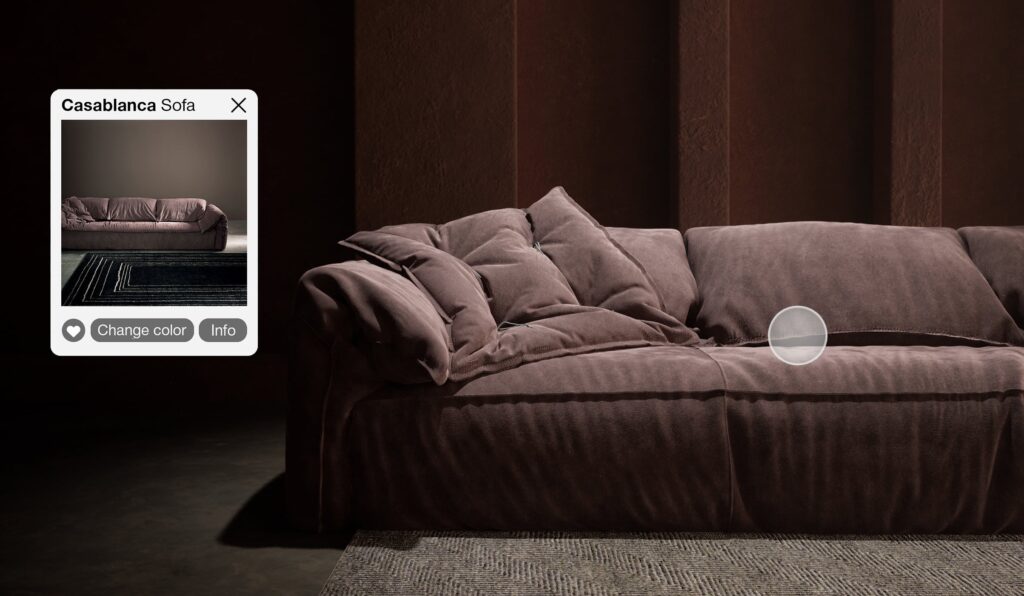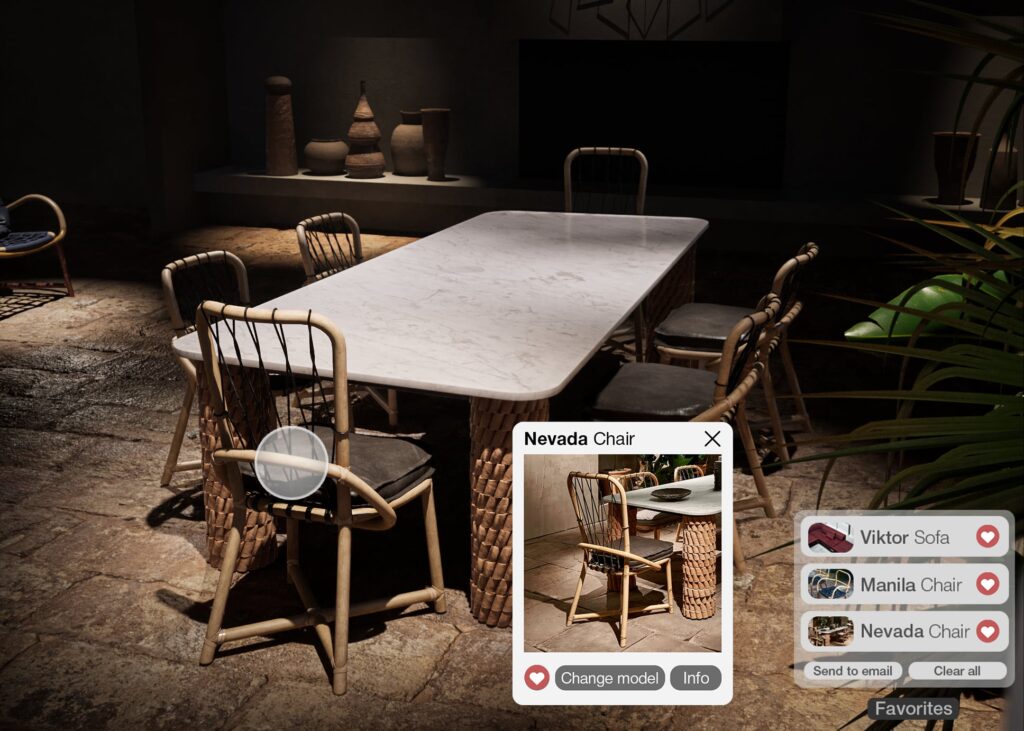Big brands are turning to 3D to increase conversions and gain a competitive edge. But is it actually worth it? And how much does it cost to get started? We’re unpacking it all in this article.

How Does Changing from Poor to Rich Content Boost Revenue?
Let’s look at the numbers. Rich content – including high-quality images, lifestyle visuals, and multiple angles – can boost conversions by up to +94%. It also helps reduce bounce rate from 55% to 30%, and increases engagement: for example, interactive visuals raise time-on-page from 45 seconds to 1.2 minutes.
3D rendering saves time and money for manufacturers with large product catalogs. Imagine your company produces kitchen units. Naturally, you need high-quality photos of the product in every color, layout, and configuration. Shipping every SKU to a photo studio? Organizing multiple shoots every time you update a product? That quickly becomes expensive and time-consuming.
With 3D, you simply convert your SKUs into models – and then create whatever you need: “studio-style” images, lifestyle scenes, videos, or interactive tools.
What Kind of Content Can You Get – and How Much Does It Cost?
Product Renderings
The cost of product rendering depends on the complexity of the item and the level of detail needed. Studio renderings (on a plain background) are great for showcasing form and design, while lifestyle renderings place your product in a real-world context – helping potential buyers envision it in their own homes. This leads to better engagement and more confident purchases.
Animations
Animated content is more complex and labor-intensive, which increases production costs. That’s because every moving element must be animated and rendered frame by frame. While more expensive, these visuals offer unmatched storytelling power and help bring your product or space to life.
Product Spinners and 360º Overviews
Interactive 3D views allow customers to explore a product from every angle. These experiences help eliminate uncertainty and reduce return rates. While technically closer to animation in complexity and cost, they offer long-term value by enhancing product understanding and customer satisfaction.
Product Configurators
Interactive configurators let your customers personalize every aspect of a product – from materials and finishes to layout and functionality. This content type is especially valuable for complex or customizable items such as furniture, lighting, or appliances. Though they require a higher initial investment, configurators significantly increase user engagement and overall conversion rates.

How the Price Is Formed
Many factors influence final pricing – including urgency. Tight deadlines typically raise costs, so it’s best to plan ahead if you want to fill your site or marketplaces with 3D content.
Image quality also matters: high-resolution visuals (like 15K renders for billboards) require more time and processing power. The more detail you need, the higher the cost.
Finally, the expertise of the team plays a role. Experienced artists can handle complex projects faster and more efficiently, delivering consistent, high-quality results. Professional services may appear to be more expensive, but in the end, you save time and stress while receiving the high-quality results you want.
So How Much Does It Actually Cost?
As we mentioned above, the price depends on many factors. But if we talk about average rates:
– Basic 3D renderings for architectural or product visualization typically start at $500 per final image.
– More detailed or high-resolution renders can cost $1,000 or more per image.
– Animations usually start around $2,500, but prices can go higher depending on the length and complexity of the project.
A Few Tips on How to Start Working with a 3D Studio or Artist
Plan Ahead
Avoid unnecessary costs by preparing thoroughly from the start. A good studio will guide you through a detailed briefing process to make sure all project requirements are captured early on.
Set Clear Objectives
Define your visualization goals as precisely as possible. The clearer your vision, the better the outcome. Artists may interpret briefs differently so composition, lighting, or emphasis can easily shift if the priorities aren’t spelled out. This won’t necessarily reduce your budget, but it will save time on revisions and bring better results faster.
Stay Involved and Responsive
Maintain close communication with the team and provide prompt feedback. Fast and constructive responses help avoid delays and reduce the risk of expensive corrections during the final stages of production.
How to Choose the Right 3D Rendering Partner?
When selecting a studio or freelance artist, look at:
— Their portfolio and experience with similar projects
— Reviews from past clients
— Transparency in pricing (watch out for hidden fees)
— Their ability to manage timelines and communicate clearly
Also, consider the range of services they offer. Some providers only create basic 3D models without placing them into lifestyle or contextual settings. Others may not offer animation or interactive formats.
Lunas, for example, handles the full spectrum: e-commerce imagery, lifestyle and in-context renders, technical visualizations with dimensions, 360° product spinners, and cinematic-level animation.
Finally, think about scale: how many visuals you need and how fast they must be delivered. With L-Studio, Lunas is able to visualize thousands of SKUs in record time – making it ideal for manufacturers and e-com businesses with large product lines.
Let’s Sum It All Up
How can 3D visualization help your business?
It saves time and costs that would otherwise go into professional photoshoots for thousands of SKUs, helps you stand out on marketplaces, and boosts conversions while reducing returns by providing photoreal visuals that help customers make informed decisions.
How much does 3D cost?
Basic renders start around $500 per image. More complex visuals or animations can cost $1,000–2,500+. Final pricing depends on detail, resolution, deadlines, and scale.
What are the first steps?
Set clear goals, prepare a solid brief, and choose a studio with a portfolio that matches your needs. Then collaborate closely – quick feedback leads to quicker results.